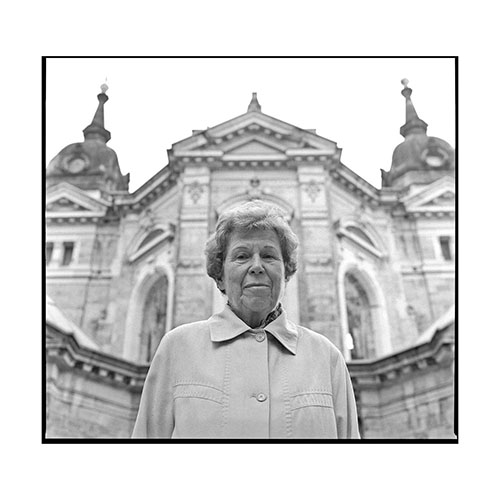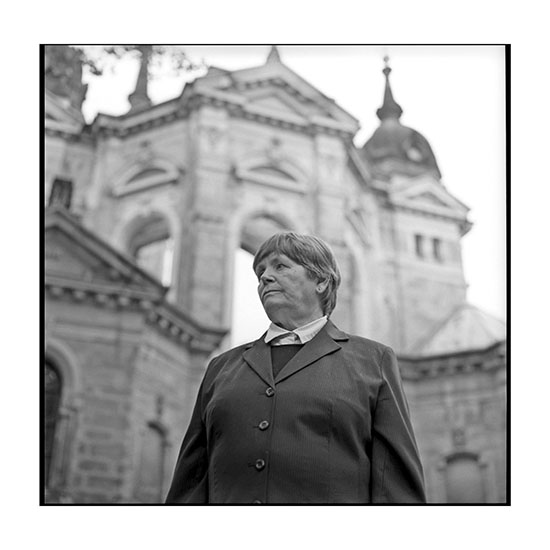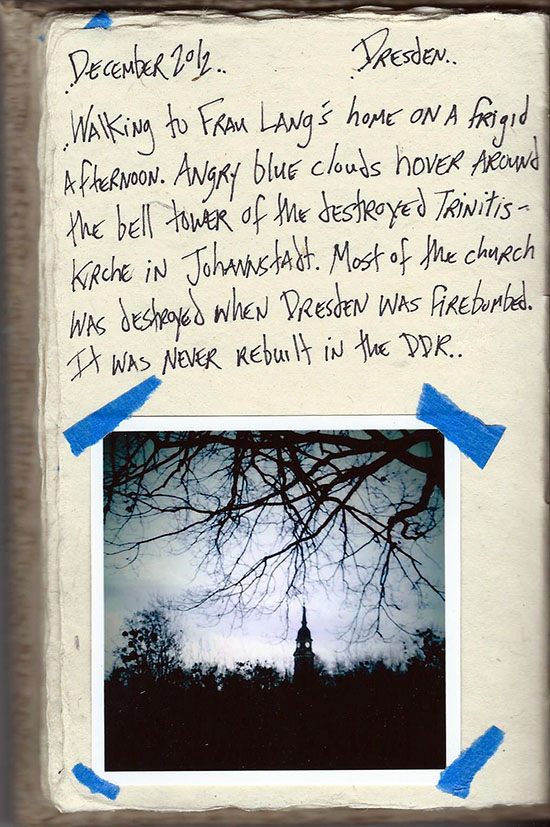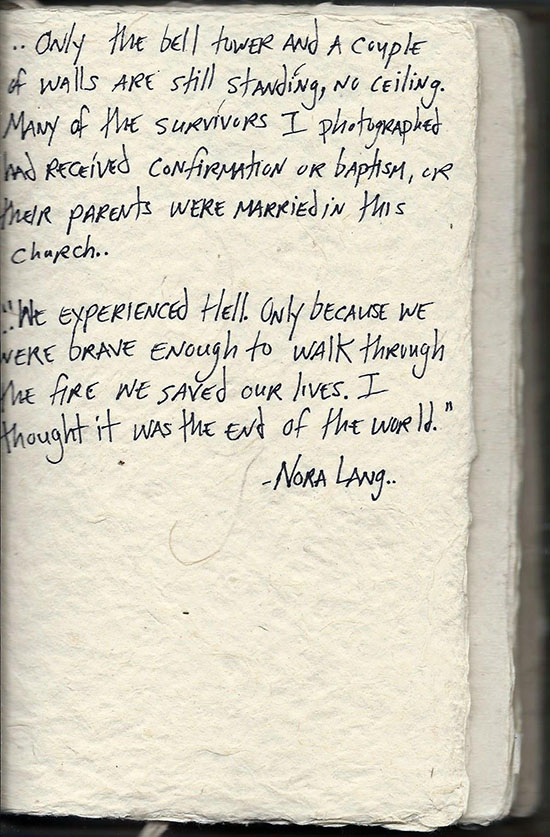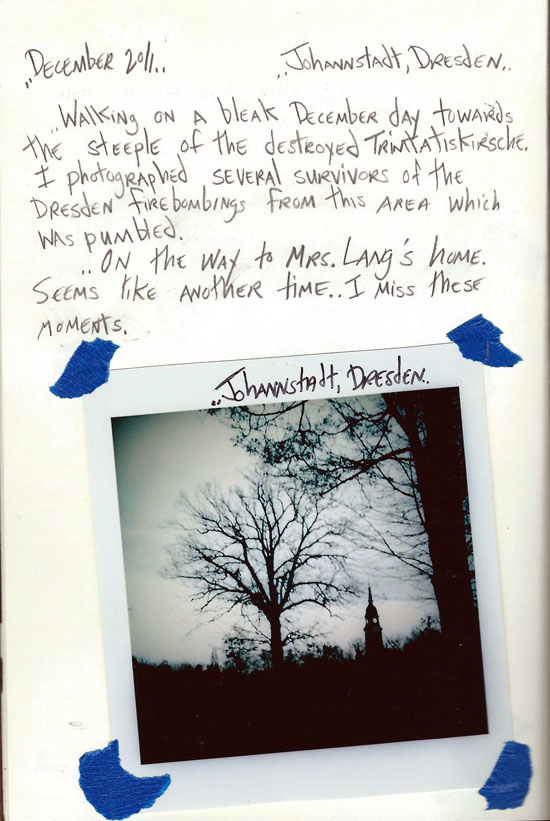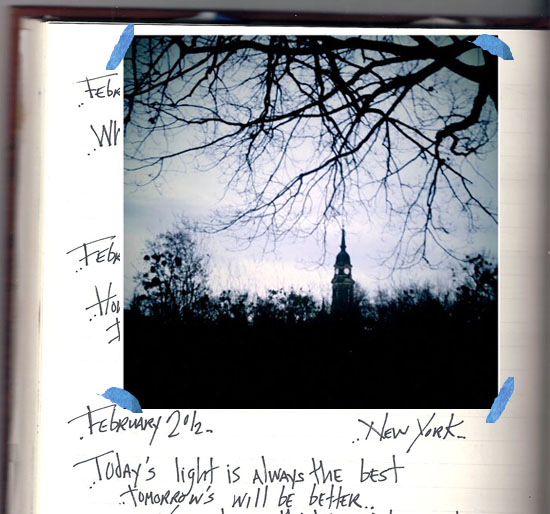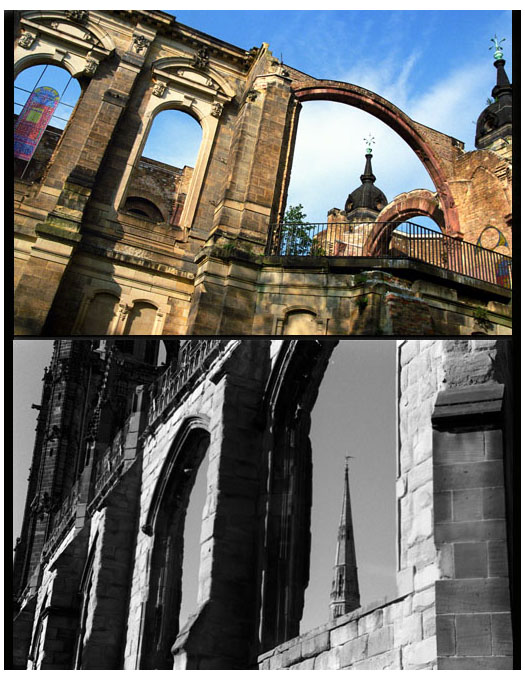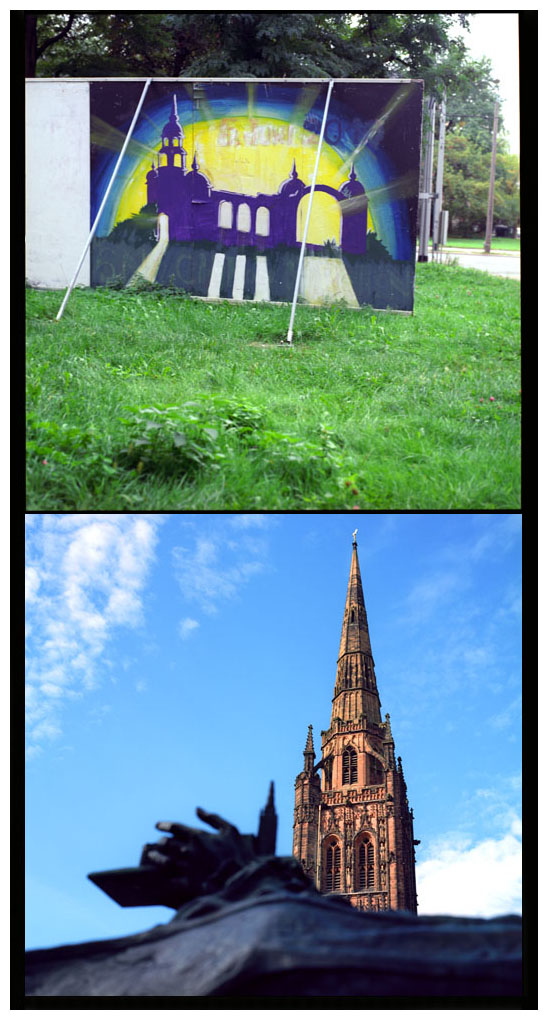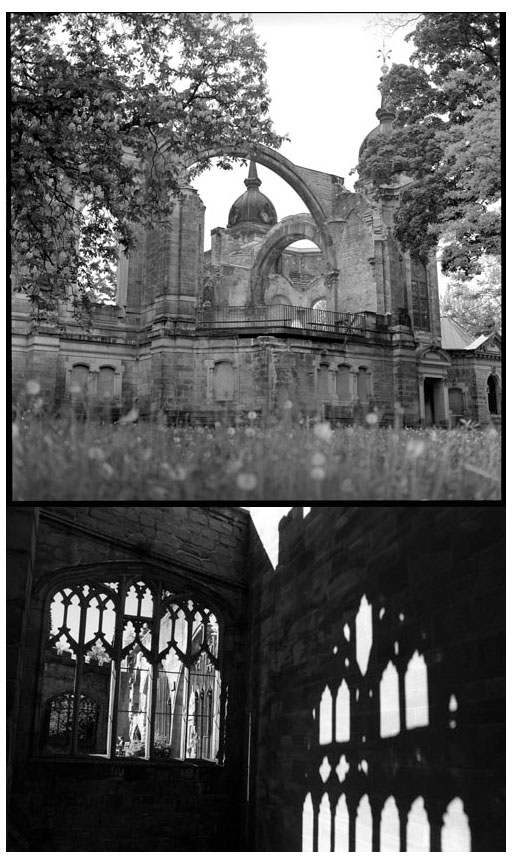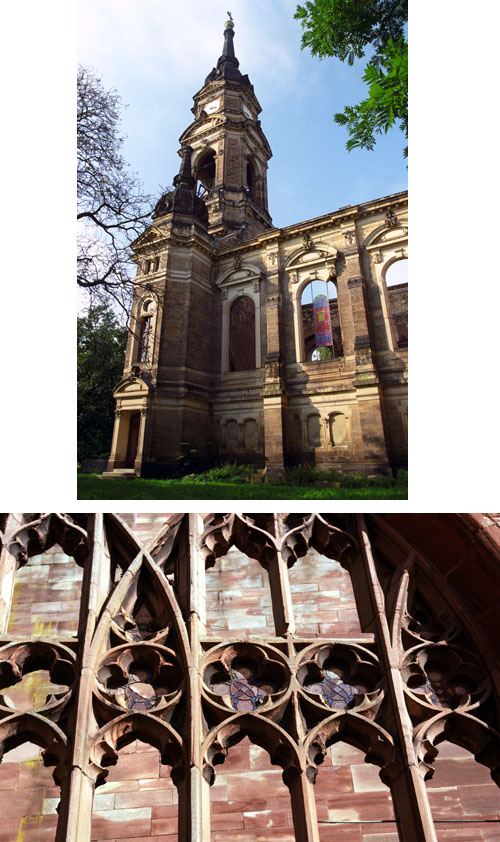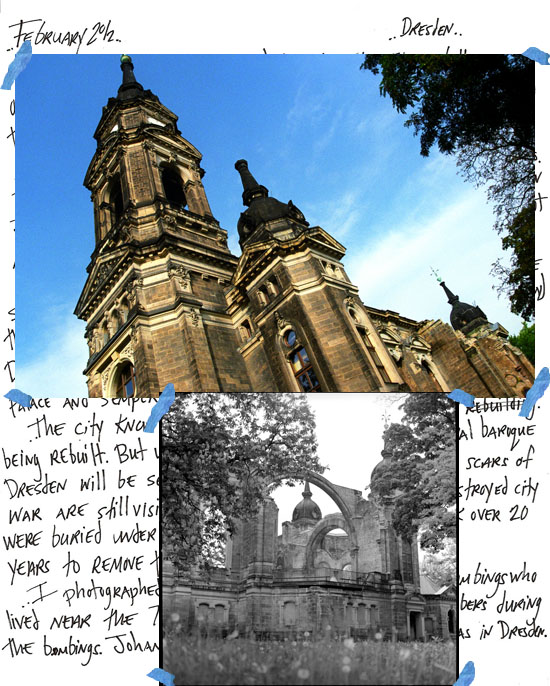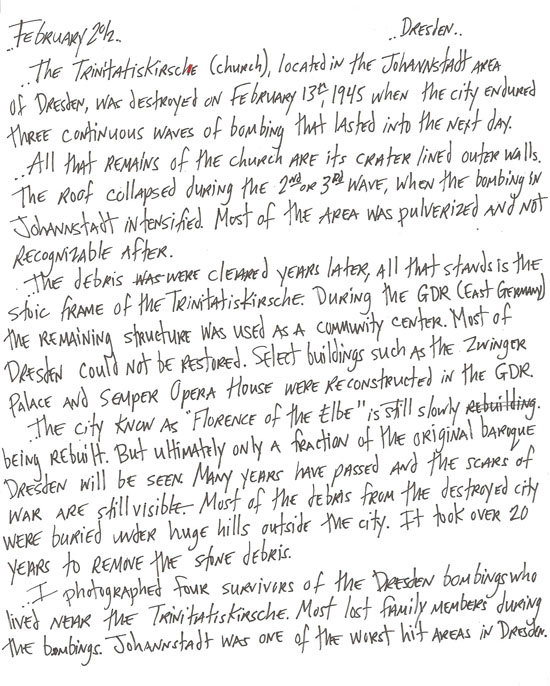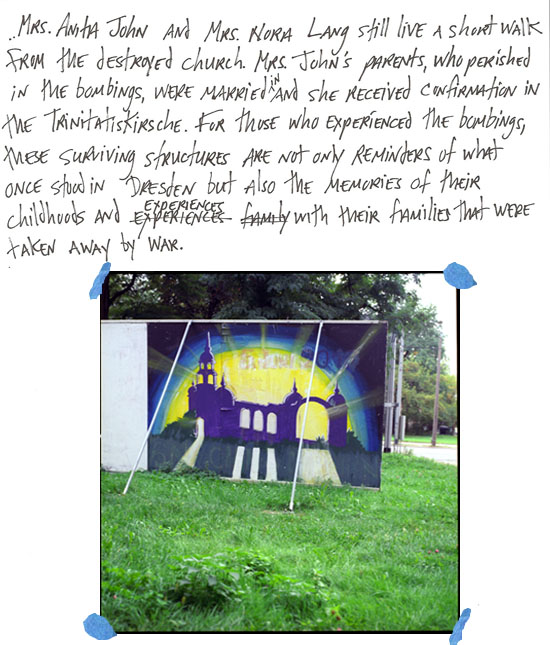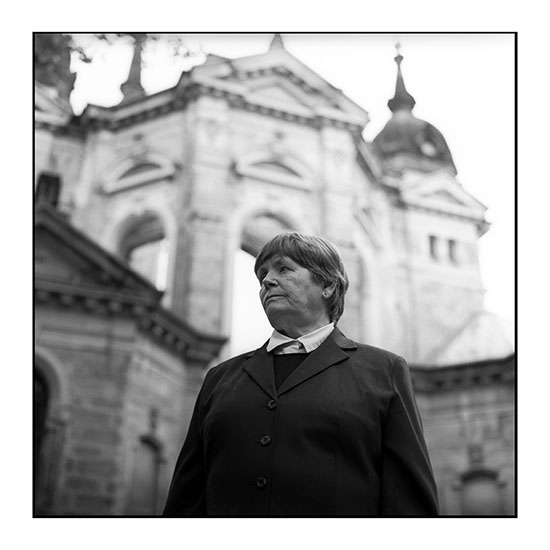
“My father said, “The war will have an awful end. If we are separated from each other, you have to leave the town! Because there will be a battle for the town.”
-Nora Lang
On February 13th, 1945 the baroque city of Dresden, Germany was firebombed into cinder by the British Royal Air Force and the United States Army Air Force. The attack was divided into three bombing raids dropping over 4,500 tons of high explosives, including incendiary bombs, onto the city known as “Florence on the Elbe.” Nora Lang still lives close to where her original home was destroyed. From her living room window you can see the location of her old house. She is photographed next to a ruined church, Trinitatiskirche, one street from her home.
Nora was 13 1/2 when Dresden was destroyed. Her family lived in Dresden-Johannstadt. They survived the first attack by taking shelter in their cellar. After the first attack they had to leave their burning home and experience hell as they were chased by the firestorm through burning streets. They tried to find shelter several times during the deadly second and third attack waves which lasted the entire night and didn’t succumb until the next morning.
A selection of From Above portraits taken in Dresden and also including portraits of firebombing survivors from Coventry, Rotterdam, Tokyo and atomic bomb survivors is now being exhibited in Dresden at the outdoor display case in front of the Gewandhausgasse from February 12th-March 26th. Eight portraits will be displayed along with short testimonies. The photographs will change every two weeks.
This portrait is a part of my From Above project which featured portraits of atomic bomb and firebombing survivors from WWII. My limited edition book is available at https://www.photoeye.com/bookstore/citation.cfm?catalog=I1040&i=&i2=
